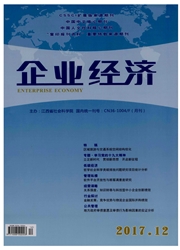

 中文摘要:
中文摘要:
基础设施互联互通是“一带一路”战略的重要内容,重庆是“一带一路”和长江经济带的Y型交叉节点,在对外开放格局和国家区域发展中具有独特而重要的战略支撑价值。随着国家“一带一路”战略不断推进,重庆市的交通基础设施仍然有巨大的需求提升驱动力,应遵循国家对重庆市的战略定位,依托长江黄金水道,打造重庆内陆国际交通枢纽,使其具备跨区域枢纽转换能力和跨区域辐射能力,高效承载国际化、大区域、大流域的产业、资源和人口的交流。打造西部内陆开发高地,需要正视以重庆市为交通中心的通道短板,破除辐射内陆、辐射丝绸之路、承载区域经济中心等三个维度的互联互通障碍,构建高效便捷的对外运输通道。
 英文摘要:
英文摘要:
Infrastructure interoperability is an important content of the belt and road strategy. Chongqing is the Y type cross node of the Belt and Road and the Yangtze River economic belt, which has a unique and important strategic support in the pattern of opening to outside world and national regional development. With the constant promotion of the national road and belt strategy, the transportation infrastructure of Chongqing still has a huge driving force for demand promotion. Following the national strategic position for Chongqing, relying on the Yangtze golden waterway, Chongqing should build an inland inter- national transport hub in the city to possess the ability of cross-regional hub conversion and radiation, effectively carry international, large regional, large watershed communications of industries, resources and population. To build the western interior development heights needs to face channel short board of Chongqing as the transportation center, break interconnection barriers of radiation inland, radiation Silk Road and carrying the regional economic center as to build a highly efficient and convenient external transport channel.
 同期刊论文项目
同期刊论文项目
 同项目期刊论文
同项目期刊论文
 期刊信息
期刊信息
